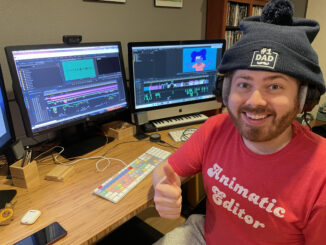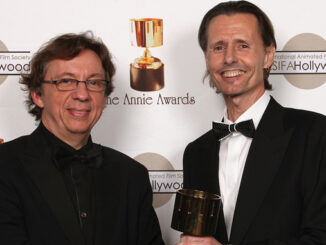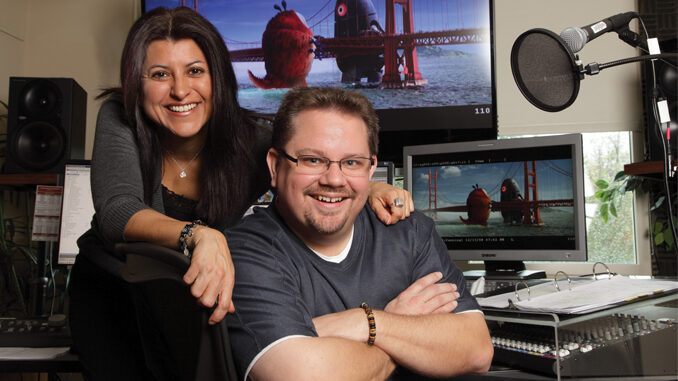
by Garrett Gilchrist photos • by Gregory Shwartz
DreamWorks Animation’s Monsters vs. Aliens may seem like your average CGI-animated blockbuster. But it’s more than that; it’s the first animated feature from DreamWorks that’s been planned, start to finish, as a stereo 3-D film. The film will be released through Paramount Pictures on March 27. Studio chief Jeffrey Katzenberg and directors Rob Letterman and Conrad Vernon are hoping it’s a success, since all future DreamWorks Animation films, including the upcoming Shrek Goes Forth, are being planned as stereo 3-D releases.
Forget the old days of red and blue glasses. This is a cutting-edge experience with polarized-lens glasses on your local IMAX screen, which follows a cast of larger-than-life heroes voiced by some very big names. A lot is riding on the film’s success. So how do editors Joyce Arrastia and Eric Dapkewicz help make this a feature that can stand on its own as a film, with characters the audience will care about? In 3-D, the danger is that the film might never rise above the level of a gimmick or a theme park ride.
When Editors Guild Magazine spoke to the editors in December, they were huge- ly excited about the 3-D element of the film, and surprisingly they felt that, in terms of characterization and the reality of the story, the 3-D was a huge blessing, rather than a distraction. Following is what they had to say, in their own words:
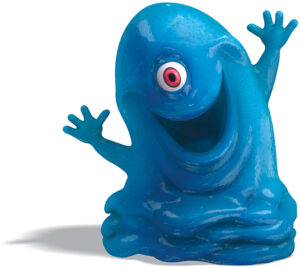
Joyce Arrastia: The producers knew right away that they wanted to do this film differently. They did not want to have this be gimmicky…things coming right out at you.
Eric Dapkewicz: Even though we have a few of those elements in there, those are mainly for comedic moments in the film. We wanted to make a film in which we felt the audience was immersed––into the actual storytelling itself.
JA: You feel as a viewer that you’re inside the movie. Rather than feeling like the characters are popping out of the screen, you feel like you are sitting in their fantasy world. We’re saying, “Come in! Come in closer!” The end result is a more compelling story than if we hadn’t done it in 3-D.
ED: It’s an adventure for us here. Jeffrey Katzenberg is a big proponent of it, because it is a new element, a different aspect of looking at telling stories, up on the screen.
JA: I feel that our movie breathes a lot more than a lot of animated movies. I think there’s a tendency for animated movies to be very tightly cut. The 3-D has given us a chance to allow a little extra time with each scene, or between cuts, without compromising the pacing. It feels a lot more real, and the people to whom we’ve shown the movie all react in a similar way. They think, “Wow, this doesn’t feel like any animated movie I’ve ever seen.”
ED: We incorporated the 3-D process before we even went into animation. That saved everybody a lot of time and money. We could decide early on that this shot would work better if we held it a little longer, or if we opened it up and slowed down the camera move. We would send it back to layout and ask, “Can you try another version with a more sweeping epic shot?

JA: It’s evolved into using more panoramic views and true-to-life aerial shots; just the attention between the foreground and the background landscapes, all to enhance the story. The cinematographer, Damon O’Byrne, started to generate previsualization. We’d get maybe four or five different takes on different shots with different camera moves, different approaches. This process has lent itself to making this particular movie feel more like a live-action movie. I think that’s going to happen more and more, and of course with live action also now having so much animation in it.
ED: We’ve been the guinea pigs; we’ve gone through all the good times and bad times. From a technology viewpoint, we needed the resources at our disposal to get us up and running, so that we could get shots from production in 3-D––any- where from layout to animation to effects to lighting––into editorial and look at them both in mono and 3-D. Creating those pipelines took a little bit of time and finessing.
JA: I was really worried about it. Everything they were talking about… “We’re going to have playback and real 3- D in your rooms and you’ll edit in 3-D.” I thought, “Oh no! I just wanted to edit the movie!” I really thought it was going to interfere with the day-to-day process of just editing the film. Everyone was really excited, saying we were going to be pioneers, because it had never been done before––certainly not at our studio. All of the 3-D movies that we were researching had their 3-D done as a post conversion process.
ED: We’d seen films made in a regular version and then they add the 3-D process in post after it’s all been done.
JA: You’re just a lot more limited if you apply the process after the film is done. If you have a choice, you would definitely want to author it in 3-D as you make it. A lot of people just don’t realize the creative advantages of doing it that way. A lot of animated 3-D movies that are converted don’t feel like they’re edited well, because they weren’t edited for 3-D. So unless you’re prepared to open up shots later in post-production––and that’s an expensive thing to do––I think the end result is a movie that feels a little uncomfortable to watch, and it just doesn’t have the same impact.
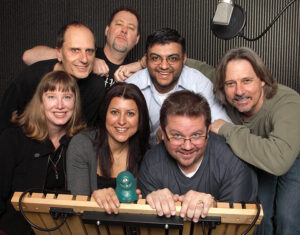
ED: I can’t say enough about our cast. Stephen Colbert’s just funny as heck. Rainn Wilson, Reese Witherspoon, Seth Rogen; they’re all great.
JA: The character B.O.B. (Rogen) is this kind of gelatinous mass. You can see through him, he can move in different directions. He’s a great 3-D character. There’s a lot about the characters and the story that lend themselves well to 3-D.
ED: The Susan character (Witherspoon) is a 49-and-a- half-foot-tall woman––that in and of itself has been a challenge; then there was the size issue of getting everybody on screen together, so we can actually make her stand out from a building or trees.
JA: Susan is shown in her everyday life at the beginning. That character would be shot behind the stereo window, so that she appears to be more flat on the screen. As a viewer, you’re watching her inside of her world. But once her transformation happens, the stereo settings change so that her character’s actually in front of the stereo window. The stereo window is something that the audience doesn’t see, but the character looks more like she’s pushed out toward the audience. She’s now more in our personal space as we watch her.
Later, we see her reunite for the first time with the people from her past that are still normal size. In a scene like that, those stereo windows would almost be split down the middle, so she’s pushed out, but the character she’s talking to is still pushed back. That subtlety emphasized her separation. She’s not normal, not part of their world anymore. This kind of thought was put into all the scenes with the 3-D.
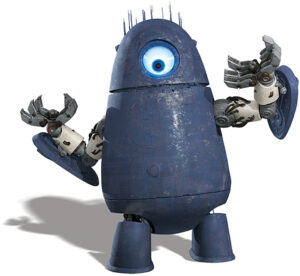
ED: We may go a year or two in just storyboard form before we ever get into a previz or layout stage. That, to me, is actually very fulfilling from an editing standpoint. You get a bit more into the creative process of the actual movie itself, of the storytelling and character development.
JA: We started on the film in early 2006. It was a very small group and we were just putting together conceptual pieces. The story slowly started to evolve, and a lot of it really does take its shape in editorial. Once we have our sequence cut together as storyboard, and the directors come in and work on it, that’s when we realize: “Hey, y’know, what she really needs to be saying is this!” We’ll even record lines right there in our rooms, because we have microphones set up. We can kick the script back to the writers.
ED: What’s happened on every film I’ve ever been on is that we get the storyboards, script and dialogue. We put them into a cut, and a lot of times we realize it just doesn’t work. We then work with the directors to change those things that aren’t working. Would it be better if the character did this? Should they not be in this scene? Does this section need to be rewritten by the writers? We’re just brainstorming, trying new things and throwing them against the wall to see what sticks.
JA: I started out in live action, and when I would hear about animation editing, I used to think that it was just a process of assembling. But it’s much more complicated than live action. In live action, you get handed film that came out of the camera. You have your choices on which takes to choose. But the animation editor also has to put together the storyboards in a way that appears to be live-action footage. It’s all about just the right amount of frames, adding a lot of temp sound effects and dialogue and music, and just polishing it in a way that it plays like a real scene. And only then can the directors sit back and look at it and judge if it works or not.
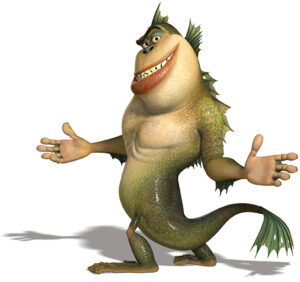
ED: When we have sections of the movie that the directors are happy with, we’ll start shooting some of it into previz. It’s laid out in a very rough kind of 3-D form.
JA: There’s a lot of collaborative work done, particularly with our cinematographer as well as the guy we call our 3-D guru, Phil McNally. He came from Disney and worked on Monster House. His nickname, even before coming to DreamWorks, was Captain 3-D. We had him to guide us along this overhaul, converting the studio into making all of its films in 3-D now.
DreamWorks wanted us to be able to edit in 3-D, right there in our room. The Avid at the time was not supporting that platform. A team of technology experts figured out a way to do it; it took a few months. We had to upgrade to HD, and they developed this box that they called Videotron, which takes the stereo image, the stereo pair, and blends it together so we can project it in 3-D.
ED: We actually put an Avid in our theatre. We look at it the most during the animatic previz process. But when a scene gets all animated, we’ll look at it again, on a bigger screen, and see if it’s still working in 3-D or if we need to do any adjustments. The animators will come up with some new ideas, or a shot might need to be extended in animation, or maybe the blocking slightly changed, and an animator moved a character slightly more screen right.
JA: There’s a file that looks like two mono images on top of each other. The top image represents the left side, and the bottom the right side. Clicking back and forth on the viewer, we were able to see the image either in 3-D or in mono. We’re able to flag all the potential problems that are common in 3-D early on.
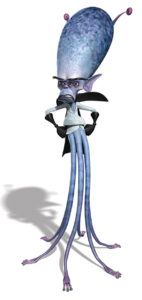
ED: It just takes more time for people to register an image on the screen when it’s in 3-D because it’s more information than your brain is used to taking in. There’s a couple of ways we can approach a scene to make sure the information isn’t too overwhelming for viewers.
JA: We can see if something feels too abrupt. We’re able to fix it right there in our rooms by adding time, or collaborate with the other departments and pick up the phone and discuss what our other options are.
ED: We can play around with the depth cues. If we have a shot we want to last on the screen for over five seconds, we can have it feel like there’s more depth to the shot, because then your eyes have more time to register what’s on the screen.
JA: We could also combine shots. Say we had a sequence that started off with a wide establishing master, a medium shot and then a close-up. We could just create one long shot with a sweeping steadicam move. Or maybe they would add some foreground set dressing. It was actually forcing us to come up with more dynamic shots.
ED: We have an action scene in San Francisco, where our main character’s being chased by a huge robot. We wanted to pick up the pace and have the cutting quicker, but in 3-D, if we wanted the shots to be that fast we had to narrow the depth, so there’s not as much information being shot at you on the screen, and it won’t give you a headache. What doesn’t work real well in 3-D is a lot of blur, shaky camera. Movement has to be clear and precise.
JA: Our 3-D guru can also blend the convergence, which softens the depth from cut to cut, if the 3-D is too heavy. It’s almost a dissolve. Much of the 3-D––the stereo settings and everything––was done by a different department. But our biggest challenge was giving the eye a chance to adjust. You don’t want the audience to become an aesthetized to the 3-D.
ED: We really want people to walk away feeling that they’ve had a great experience. And they realize that this actually is working! At a test screening, we asked if anyone felt there was anything in particular up on the screen that was too jarring, or made them feel sick or gave them a headache. We didn’t have anybody, so that was a big thumbs up for us!
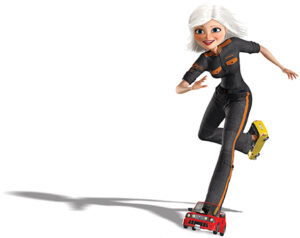
We get so close to the film that a lot of times it was difficult to see the simple things that we take for granted in the storytelling. After we’ve shown it to an audience, we get some notes. We might focus on a specific area that it seems like a lot of people were struggling with, some- thing in the story. That depends on how much time we have left––some changes we can do, some we can’t. But it’s easier to manipulate objects on the screen and in the camera, and do things that you can’t quite do in live action.
JA: We don’t want to see every movie in 3- D. Like, say, Schindler’s List. But I have to say that when I watch Monsters vs. Aliens in 3-D, because of that subtle feeling of being inside the world of the characters, I find it more enjoyable. So I’m starting to think that it could make any movie a much more dynamic experience, to a certain extent.
We were the pioneers, there are already people gearing up for the next 3-D release who need to start considering the 3-D-ness of it all.
ED: I have a lot people from other shows knocking on my door, asking me, “How did you deal with this?”
JA: As an editor, I would definitely talk to them about not being afraid to give the shot more time. And avoid doing anything in 3-D that could possibly risk distracting the audience from the story. For me, it’s been a revelation. We were able to use it to emphasize key story points and a character’s emotional arc simply by adding it or lessening it. A lot of filmmakers maybe don’t realize that 3-D really is just another tool that helps you tell a more compelling story––just like the choice you make in camera composition, or using color or music or pacing to help set a tone and a style.
The end result was a much more compelling story, and so now I’ve really embraced it. I think it’s not a pass- ing phase; 3-D is definitely here to stay for a while. I hope that with the technology evolving, it’s just going to get better and perhaps easier.
ED: I guess we’ll all find out come March 27!


